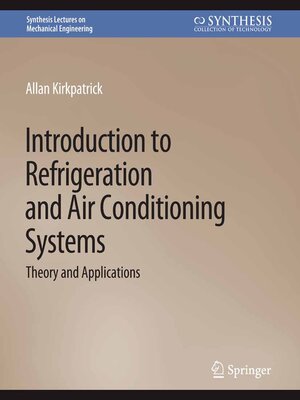Introduction to Refrigeration and Air Conditioning Systems
ebook ∣ Theory and Applications · Synthesis Lectures on Mechanical Engineering
By Allan Kirkpatrick

Sign up to save your library
With an OverDrive account, you can save your favorite libraries for at-a-glance information about availability. Find out more about OverDrive accounts.
Find this title in Libby, the library reading app by OverDrive.



Search for a digital library with this title
Title found at these libraries:
| Library Name | Distance |
|---|---|
| Loading... |
This text provides background information, description, and analysis of four major cooling system technologies—vapor compression cooling, evaporative cooling, absorption cooling, and gas cooling. Vapor compression systems are currently the primary technology used in most standard domestic, commercial, and industrial cooling applications, as they have both performance and economic advantages over the other competing cooling systems. However, there are many other applications in which evaporative cooling, absorption cooling, or gas cooling technologies are a preferred choice.
The main focus of the text is on the application of the thermal sciences to refrigeration and air conditioning systems. The goals are to familiarize the reader with cooling technology nomenclature, and provide insight into how refrigeration and air conditioning systems can be modeled and analyzed.Cooling systems are inherently complex, as the second law of thermodynamics does not allow thermal energy to be transferred directly from a lower temperature to a higher temperature, so the heat transfer is done indirectly through a thermodynamic cycle.
Emphasis is placed on constructing idealized thermodynamic cycles to represent actual physical situations in cooling systems. The text also contains numerous practical examples to show how one can calculate the performance of cooling system components. By becoming familiar with the analyses presented in the examples, one can gain a feel for the the representative values of the various thermal and mechanical parameters that characterize cooling systems.







